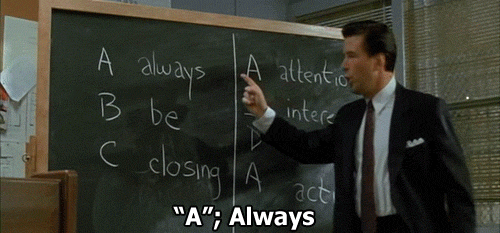Despite what various social media and content marketing experts and “influencers” want you to believe, the fact is that email is still what brings home the bacon. This is not saying that social media and content marketing do not have their place in the modern world of business. This is simply stating a fact – when it comes to making a sale, the email is still king.
Unfortunately for salespeople, the king is more of a 21st century royalty no one pays attention to than the medieval Ignore me at your own peril! type royalty.
In other words, an insane majority of sales emails are ignored. Utterly, coldly and disdainfully ignored.
That is, unless you have mastered the elusive art of writing a spectacular sales email. This is an art that is best perfected with time and experience, but this does not mean there aren’t tricks that you can employ to improve your sales email.
95% Research, 5% Everything Else
Back in the “good old days” of bourbon-swilling, steak-devouring, polyester-wearing, heart-attack-at-50 salespeople, sales were made by knowing all the right people and, what is even more important, learning about them. It’s like when you realize in The Office why Michael Scott killed as a salesman. It’s because he knew everything about every one of his customers.

The channels may have changed, but the concept is the same – learn as much as you can about the person you are sending your email to.
Who are they? What do they do (but really do)? What is the problem they need solved the most? Can you solve that problem? Does anyone in your company know them? What do they think about the industry? Who are their friends? How do they spend their free time? Did they visit your website? What did they do there?
This could have easily been a block of questions that would take you a couple of hours to read. There is never a shortage of questions and insights that you can get by answering those questions.
The good news is that this has become easier than ever before thanks to social media, website visit trackers, surveys on shopping habits, and specialized tools.
You can never spend too much time on researching your leads.
Be Smart About Language
David Ogilvy, the father of advertising and one of the most important people in the history of marketing once said,
I don’t know the rules of grammar… If you’re trying to persuade people to do something, or buy something, it seems to me you should use their language, the language they use every day, the language in which they think. We try to write in the vernacular.
In other words, know your audience and adjust your language accordingly. If you are approaching an industry veteran of 30 years who has been in the game for longer than you have been alive, refrain from being overfamiliar and using marketing newspeak.
Also, you would do well to familiarize yourself with what kind of commonplace email elements work better than others. For example, the good people from Boomerang recently did a massive study which showed that thanking the person in the closing of your email yields by far the best results. So why not use it?
There are myriad little things and studies like this (not only on Boomerang’s site) that can really turn the tides for the response rates that you are seeing.
Solve a Problem
Many salespeople approach writing a sales email with a single instruction at the back of their head – make the sale. Or, as Alec Baldwin put it so painfully directly in Glengarry Glen Ross – Always Be Closing!
This is not the mantra behind a successful sales email.
Instead of make the sale, use solve a problem.
That is how products and services are sold. They solve someone’s problem and solve it in a way that they will be almost glad to pay for it. As the legend of copywriting Joseph Sugarman put it,
If you do your job right, customers have to feel guilty if they don’t buy right now.
Of course, persuading someone that you are the problem-solver and that your product or service is the thing to make their problems disappear is a difficult task. That is what the entire sales email is about. That is also where you will put the previous two tips to good use – you will use research to identify their problem and their history of solving that problem, and; you will use the right language to convince them that you have the solution.
Once you adopt this approach, you will automatically stop using salesy expressions and vernacular which drives leads away.
The modern customer is an intelligent one.
Treat them as such.












Comments